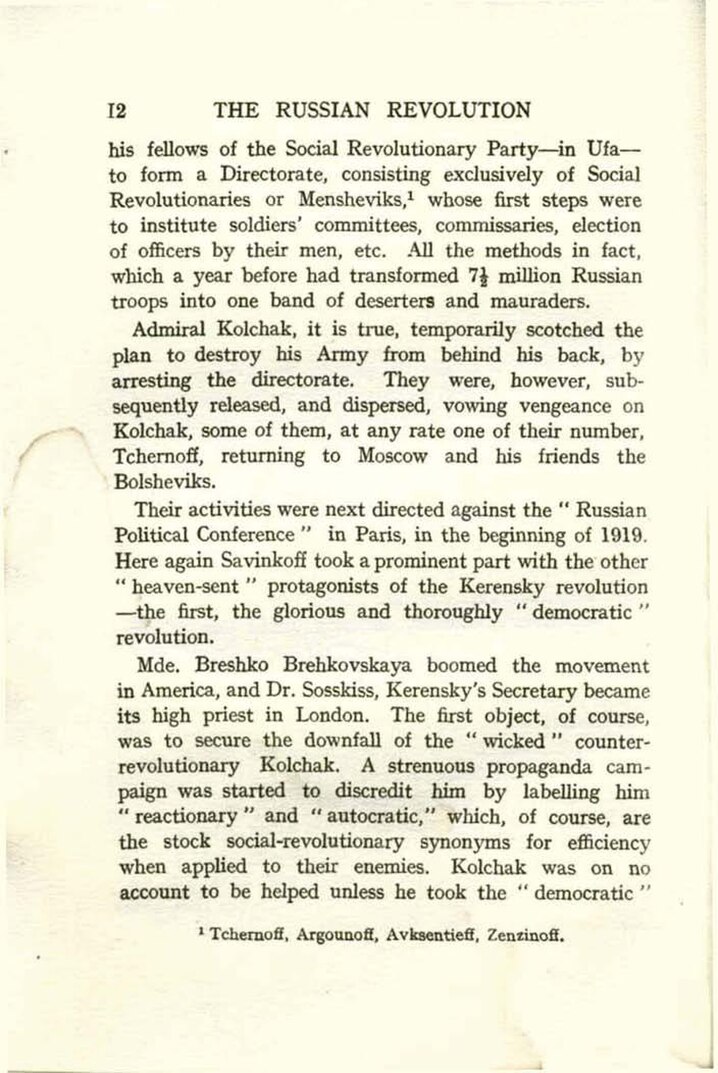his fellows of the Social Revolutionary Party—in Ufa—to form a Directorate, consisting exclusively of Social Revolutionaries or Mensheviks,[1] whose first steps were to institute soldiers' committees, commissaries, election of officers by their men, etc. All the methods in fact, which a year before had transformed 7½ million Russian troops into one band of deserters and mauraders.
Admiral Kolchak, it is true, temporarily scotched the plan to destroy his Army from behind his back, by arresting the directorate. They were, however, subsequently released, and dispersed, vowing vengeance on Kolchak, some of them, at any rate one of their number, Tchernoff, returning to Moscow and his friends the Bolsheviks.
Their activities were next directed against the "Russian Political Conference" in Paris, in the beginning of 1919. Here again Savinkoff took a prominent part with the other "heaven-sent" protagonists of the Kerensky revolution—the first, the glorious and thoroughly "democratic" revolution.
Mde. Breshko Brehkovskaya boomed the movement in America, and Dr. Sosskiss, Kerensky's Secretary became its high priest in London. The first object, of course, was to secure the downfall of the "wicked" counter-revolutionary Kolchak. A strenuous propaganda campaign was started to discredit him by labelling him "reactionary" and "autocratic," which, of course, are the stock social-revolutionary synonyms for efficiency when applied to their enemies. Kolchak was on no account to be helped unless he took the "democratic"
- ↑ Tchernoff, Argounoff, Avksentieff, Zenzinoff.
